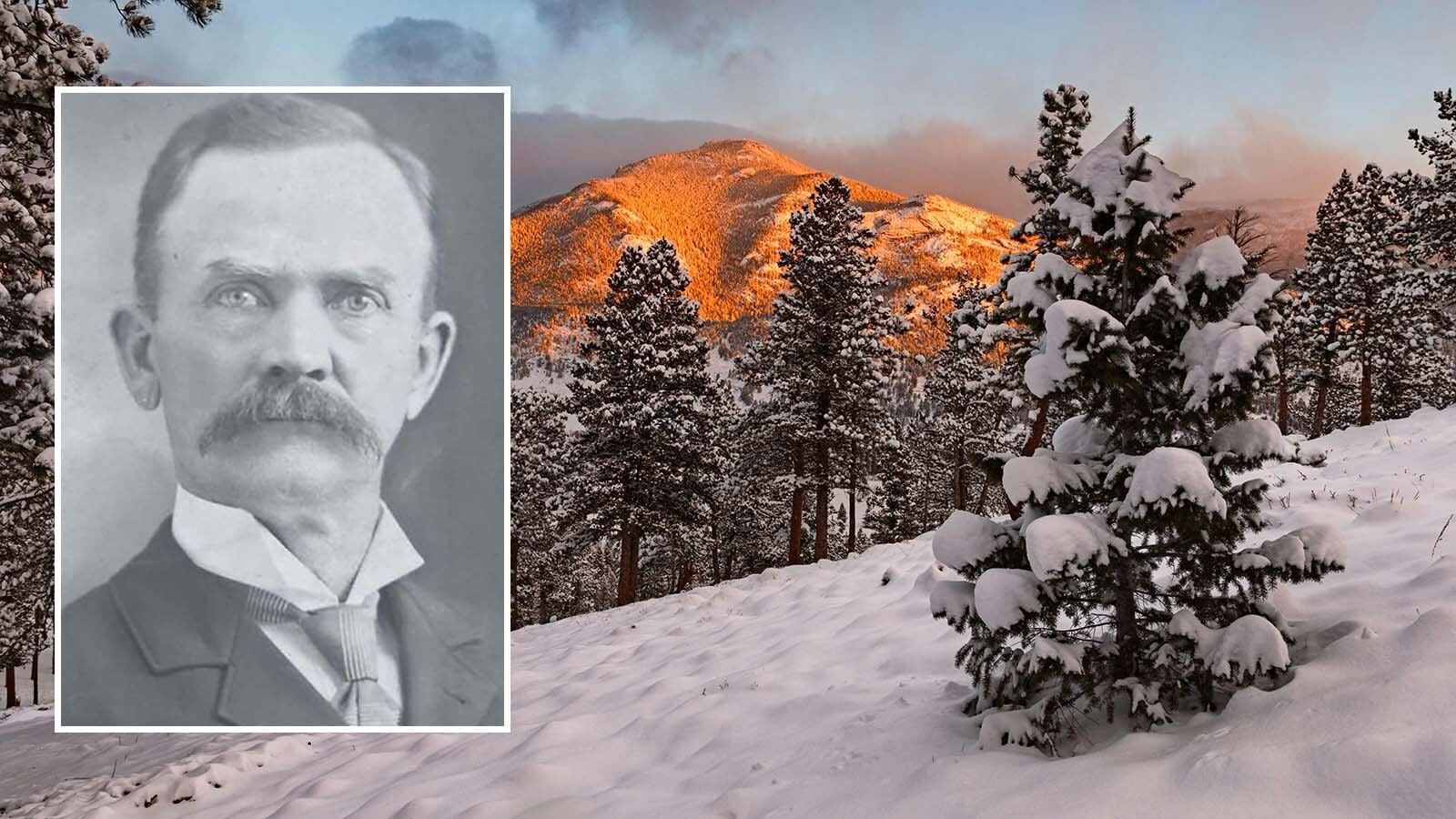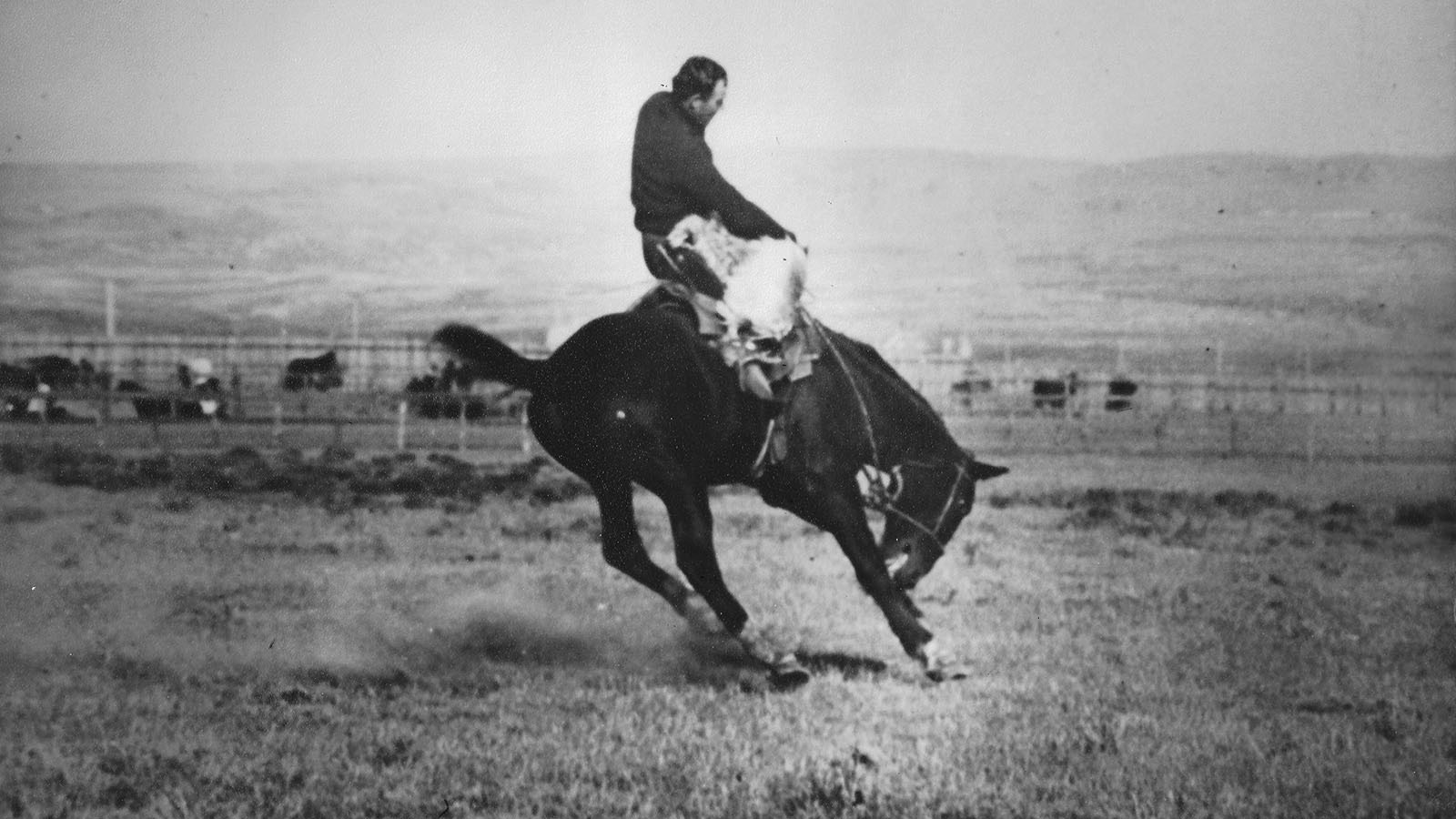Born in Templin, Germany on April 25, 1859, Paul Miller was orphaned at four years of age. With the small inheritance that he had, his aunt Mrs. P. Musheld used those funds to pay for passage to America for Miller, her husband, and herself.
They lived in New York City where he went to school and grew up. Miller also worked in a cracker factory where his job was to knead the dough with his feet. He never ate crackers after that.
Miller, his aunt, and uncle moved to Sidney, Nebraska where they had relatives farming. By 1878, Miller owned a bull team consisting of five oxen. He lived in Sidney, so he began hauling freight on the Sidney-Deadwood Trail.
Charles Sager, his business partner had wagons and cattle, along with a night herder, Herman Retzloff. There was always a milk cow in the bunch allowing the men to have fresh milk as part of their meals.
In their first summer hauling freight from Sidney to Lead, Deadwood, and Custer, all in Dakota Territory, one of their heaviest loads was transporting part of the stamp mill to the Homestake Mine at Lead.
After a season of freighting, they went back to Sidney over that winter. But they were back on the Sidney-Deadwood trail with their freighting outfit in 1879. That October Miller was ready to return to Sidney from Custer for his winter stay.
One of the stops on the Sidney-Deadwood Trail was called Spring on Hill and he camped there for a night. But when he woke in the morning he was in a bad snowstorm and found that his oxen had drifted with the wind and were gone.
A Place For Wintering
When the snowstorm subsided, Miller scouted for his cattle, which he found just north of Hot Springs, Dakota Territory, in a canyon called Hot Brook. The cattle had found water and were in fine shape.
It dawned on him that he had found the place to winter over. There was good water and wild game aplenty. Miller built a log cabin and a fence to keep the oxen corralled, with his log supply from the trees on that land.
In the spring, he resumed freighting going back to his cabin during autumn. On October 31, 1884, Miller and Augusta Dumke, also originally from Germany, were married. They lived in the log cabin.
Augusta’s brother Charles Dumke settled near the Millers. When Mrs. Miller neared the time of the birth of her first child, she and Miller traveled to Sidney for the birth, which occurred on October 4, 1885.
Mrs. Miller’s twelve-year-old sister accompanied the family back to the cabin. They were conveyed in a covered wagon pulled by an ox team. The trip took three weeks.
More Family
By the spring of 1886, Charles Dumke had brought his parents, brothers, and sisters from Sidney to live in the area near the cabin. Once the land was surveyed, Miller purchased a quarter section of land, 40 acres, from the federal government. He paid $1.25 per acres for this preemption, and it included the land where he first called home.
Miller was able to homestead an adjoining quarter section and over the years purchased additional land. He had cattle which were transported by train to market, loaded on at Minnekahta and sent to Omaha.
The Millers eventually had twelve children, although four died in infancy. The family had a bountiful irrigated garden, chickens and hogs, as well as an apple orchard. They raised nearly everything they ate. Miller built his barns with wood from his own trees.
Miller worked to open a school and was school board treasurer for years. Frequently, the country school teacher boarded with the Millers. The Minnekahta Valley was richer for Miller’s efforts in being a good citizen.
One Of The Freighter’s Stories
Through the years Miller continued freighting.
On one trip over the Cheyenne River south of Cascade, Dakota Territory, Miller’sthird wagon was loaded with six thousand pounds of beans. It had rained and in some places the wagon did not track very well. On a turn around a creek, it kept slipping toward the bank; at last, the bank gave way, and down went the wagon, beans and all into the water.
Miller stopped, took the oxen out of their yokes, and began the labor of retrieving the load. The beans were in sacks of one hundred pounds each. One by one the heavy sacks were dragged out. The beans were soaked.
The only thing to do seemed to be to dry them as best they could. Imagine the task of drying three tons of beans under such conditions.
Every available tarpaulin, canvas cover, and blanket was pressed into service; beans and more beans were spread upon them. For three days the freighters fanned and changed and fanned again that mountain of beans.
At the end of that time, they brought their sixty sacks and began putting their wares into them. The beans had swelled. After the sacks were all full there remained what was estimated to be about twenty-five hundred pounds of beans.
Miller loaded his sixty sacks and delivered them to the consignee. The consignment called for just that many sacks of beans.
Then he returned to the scene of the disaster, loaded up the remaining twenty-five hundred pounds and took them home. He concluded his narrative by saying, “We have had beans to eat for years.”
Maybe that’s where the saying, “You are full of beans,” originated.
After living a good life, Miller died December 10, 1927. His descendants continue to live and ranch in the Minnekahta Valley, near Hot Springs, South Dakota.
Peggy Sanders can be reached at peggysanders.com





